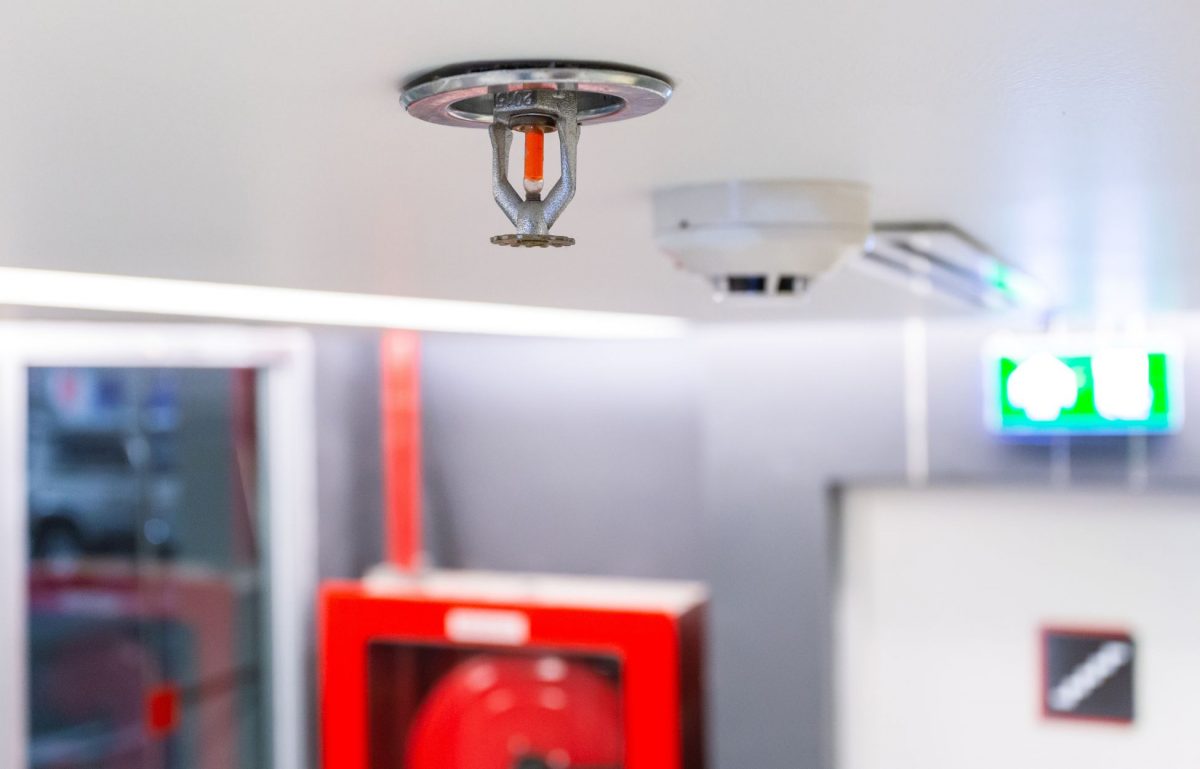One might not consider the building’s design as a part of fire safety efforts when wandering through the web of corridors in a new workplace. Still, the truth is that many design elements significantly impact a building’s ability to withstand fires. Let’s examine how building design contributes to fire safety efforts.
1. Compartmentalization: Containing the Blaze
“What’s the point of those pesky fire doors,” you might ask. Compartmentalization is the answer! It’s an essential aspect of building design that aims to contain fires within the origin area. By dividing a building into smaller compartments using fire-resistant walls and doors, architects can limit the spread of smoke and fire, providing occupants with more time to evacuate and firefighters with more time to respond. Firefighters can minimize the damage and potentially save lives and property by confining the flames and smoke to one area.
2. Sprinkler Systems: A Building’s Fire-Fighting Weapon
Automatic sprinkler systems are like little fire hydrants that burst into action when temperatures get too toasty. Crucial to any building design, they can detect and help control fires before they become unmanageable by dousing sparks with water. Sprinklers are especially useful in large workplaces and residential structures, contributing significantly to overall fire safety.
3. Fire Escape Routes: Your Path Out Of Trouble
No building design is complete without a thorough plan for escape routes. These routes consist of fire-resistant doors, corridors, and stairways that guide occupants to safety during a fire. As part of a comprehensive fire safety plan, building designers must consider the primary escape routes and alternative routes in case the primary options become inaccessible.
4. Fire-Resistant Materials: Non-Combustible Champions
Designers must prioritize the use of fire-resistant materials during construction. These materials slow down the speed of flames spreading throughout a facility, ensuring key structural elements remain sound during a blaze. Additionally, utilizing fire-resistant glazing, such as tempered or wired glass, can help maintain a building’s integrity during a fire.
5. Investing in High-quality Safety Gear and Supplies
Smash open the glass of a fire equipment cabinet, and you’ll find a wide range of tools designed to assist in a fire emergency. Businesses must stock their property with high-quality gear and supplies from a reputable fire equipment supplier to ensure ultimate preparedness. Invest in dependable fire extinguishers, alarms, and other critical equipment. Don’t cut corners on safety—you’ll be kicking yourself otherwise.
Building design is crucial to enhancing fire safety efforts. Like the elements listed above, combining them with high-quality safety gear and supplies will protect the building’s occupants and minimize the risk of fire damage.













